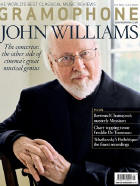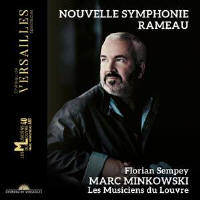Texte paru dans: / Appeared in: |
|
|
Outil de traduction |
|
|
I’m sure baritone soloist Florian Sempey and conductor Marc Minkowski won’t mind if I first praise the four other heroes on this disc: Jani Sunnarborg, Josep Casadella, Thomas Quinquenel and Nicolas André. These are the four bassoonists who throughout the album provide so much pleasure. Take the Ouverture to Castor et Pollux (1737) that opens this ‘Nouvelle symphonie’: the bassoons fizzle and growl, infecting the rest of the band with glorious rhythmic vivacity and dynamic bounce. And again, in Act 2 scene 6 of Les Paladins (1757), the bassoons are a burnished, tart shadow to Sempey’s declamation. Timbre is at the heart of this album’s success. Gloriously shrill and out-of-tune flutes, trilling horns, strings plucking à la guitare with not a care in the world – the ‘Entrée très gaye de troubadours’ from Les Paladins is a hoot. The music is as capricious as a kid in a sweetshop, and it’s fun just to try and keep track of its strange turns. I found myself shrieking in delight during the ‘Sarabande pour la Statue’ from Pygmalion (1748), such is its timbral and episodic unpredictability. These moments when the French theatre emerges to the fore is the album at its strongest. None more so than the Ouverture to Acante et Céphise, ou La sympathie (1751): scales in the woodwind fly across the band like paper streamers, horns gurgle in the middle of the texture. Even the brilliantly obstinate drumbeat provided by David Dewaste cannot control the commotion. The performance achieves something so difficult in instrumental music: it is funny. The album’s concept – ‘Let’s imagine a Rameau symphony with a voice’ – does not add much, and this is no real symphony anyway. Sempey for the most part is of superb voice, though some of the low notes feel a bit beyond his resonant reach. In the aria from Dardanus (1739), Sempey is at first heroic. This does not last long as he turns to storytelling horror for ‘Monstre affreux, monstre redoutable’: through the sighingly evocative libretto, Sempey conjures a frightening scene. But with the repeat of the ‘Monstre’ chorus, things get psychological and it is as if the singer retreats inside himself. Is he cautious of waking the monster? Or perhaps the monster is really within? As swirling strings turn into waves, the monster beckoned to emerge from the deep, we’re treated to that familiar Baroque device in which the storm is both of inner torment and exterior windbattered chaos. Minkowski controls a fabulously exciting string section. |
|




